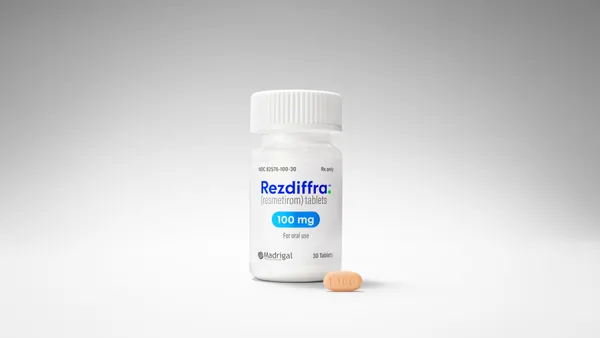20 March 2009 VIEW on Advertising AGENCY OUTLOOK The distance between the brake and accelerator on my pickup is only 3.45 inches. But the results of hitting one or the other are dramatically different. And in the new realities of the healthcare marketplace, marketing brand teams are now staring down at the floorboard with the same choice: hit the gas or slam on the brakes. The excuses for slowing things down are justifiable and many: the rising pressure of generics, greater restrictions on both professional sales calls and consumer communications, reduced staffing, smaller mar gins, channel confusion, you name it. There are plenty of reasons for hunkering down, slow walking communications spending, and waiting for traffic to clear. The thing is, no one has ever moved to the front of the pack by hit ting the brakes. Taking a Calculated Risk Success stories are written by people who aggressively and intelli gently pursued a dream.They took risks, but not reckless ones. In almost every case, the risks they took were as calculated as an Evel Knievel jump.They knew the speed and direction of the prevailing winds, they knew the right timing, and they used the right amount of horsepower in the right places.Yes, risk taking requires courage, especially these days when most everyone is staring down at a line of problems as long and looming as 14 Greyhound buses. More importantly, however, it’s the mastery of the physics that carries the day: seeing the opportunity and then seizing it. And, believe it or not, the opportunities are plenty out there.They just look different than they used to. When a company had a blockbuster product in a less restrictive market, its advertising agency could apply all the traditional marketing textbook tactics and be successful. Now the game has changed. The industry is no longer in the vacuum of a flush economy. And significant product differences are fewer and finer. So the more prevalent challenge marketers are facing today is how to accelerate growth of an existing brand in a more competitive market. Ask yourself: Is idling in third gear really getting me anywhere? Move From The Product Story to Their Story Marketers need fresh insights on how the real world is changing the way their customers see their choices. People believe different things now, people make decisions differently now, and that actually creates new opportunities for your product now — if you start looking at things differently, now. First, look at the product differently, and find the real truth; not just the differentiating positives, but also the challenges. If you don’t provide an answer that gets people over any perceived barriers, it doesn’t mat ter how well the communications score in awareness and message recall tests, you won’t get traction. Next, look beyond your product story to find the key to unlocking its potential and magnifying its value. In this new world, the difference maker may lie in transforming how your physician customers see their patients or how they look at the disease. Start transitioning from telling “your brand story” to connecting your brand to their story. Leverage the environment to position your product not just as another valuable option, but as the invaluable answer. Move from Passive to Active The “tried and true” solution simply isn’t as true anymore. Delivering messages through passive, forced exposure in a competitive environment bounces off customers’ well developed defense mechanisms. Create an invitation instead, draw them in, and get them actively involved in your story. The winners will look beyond how their customers receive information today and discover how their customers want to get their information — and be the first there. Move from Isolated To Integrated Marketers also need to connect with their customers versus isolating them. Decisions are made through dialogues with an expanding uni verse of influencers and conversations. If you can connect those conversations with your brand acting as the conduit, your brand won’t get lost in the noise.Traditionally, the focus mainly has been on acquisition and somewhat on adherence. But there is a whole world between acquisition and adherence — where creating a connected patient experience can increase the effectiveness of both. So if you’re starting to notice that the old ways don’t work as well as they used to, the answer isn’t to stop everything. Instead, grab the steering wheel, crank it 90 degrees, find a new road, and hit the gas. GSW WORLDWIDE, Westerville, Ohio, an inVentiv Health company, is one of the largest full service healthcare advertising agencies in the world. For more information, visit gsww.com. If you’re starting to notice that the old ways don’t work as well as they used to, the answer isn’t to stop everything. Instead, grab the steering wheel, crank it 90 degrees, find a new road, and hit the gas. GSW Worldwide Traffic Ahead: Hit The Brakes or Hit The Accelerator Bruce Rooke, Chief Creative Officer Welcome to the Passing Lane. Impatience is a Virtue. At GSW Worldwide, we believe, given a rematch, the hare would kick that tortoise’s butt. Brands simply can’t crawl their way to success anymore. That’s why we’ve built the world’s largest accelerator to generate momentum, energize launches, and streamline success. If you feel your brand is lagging behind your dreams, why wait? We have a ton of proven ^TM innovations to get your brand off the rural route and onto the autobahn in no time at all. To see how we’ve unstuck brands in traffic, quickdial Brian Heffernan at 614.543.6474 or hightail it over to gsww.com. Second Curve ^TM Insights Value Magnifier ^TM IQ ^TM Digital Solutions Creative Waves ^TM Encounter Marketing ^TM Brand Activations ^TM
An article from


Traffic Ahead: Hit The Brakes or Hit The Accelerator
Filed Under:
Commercialization









